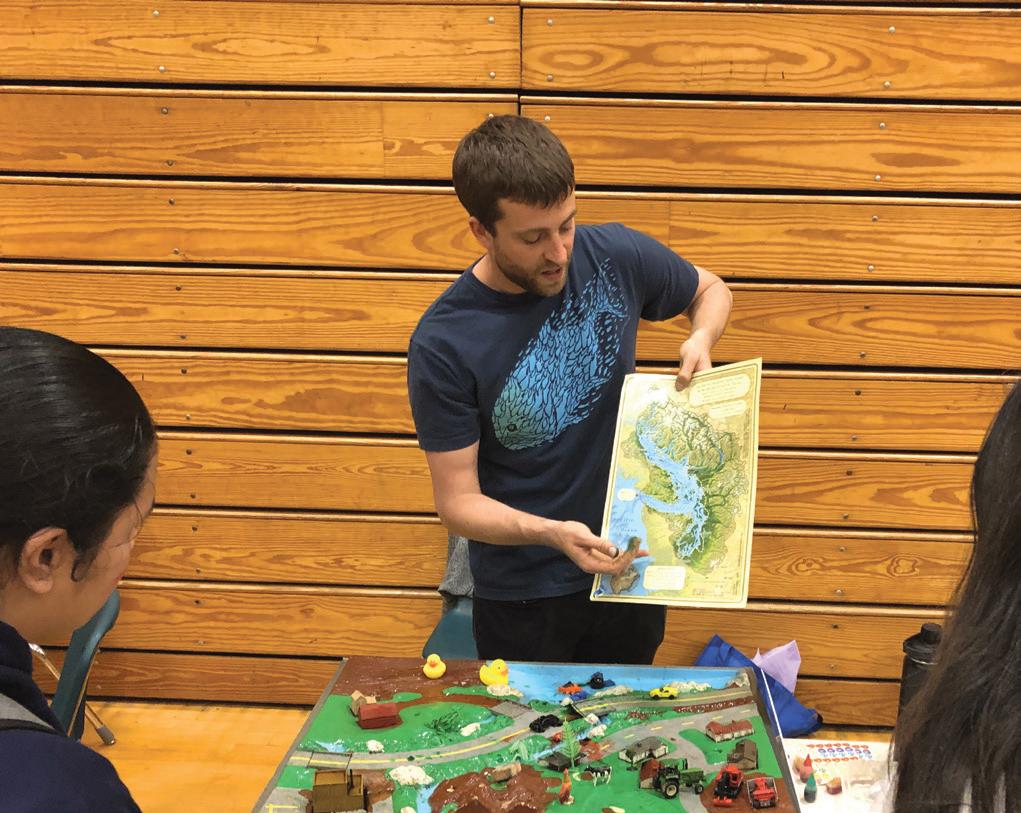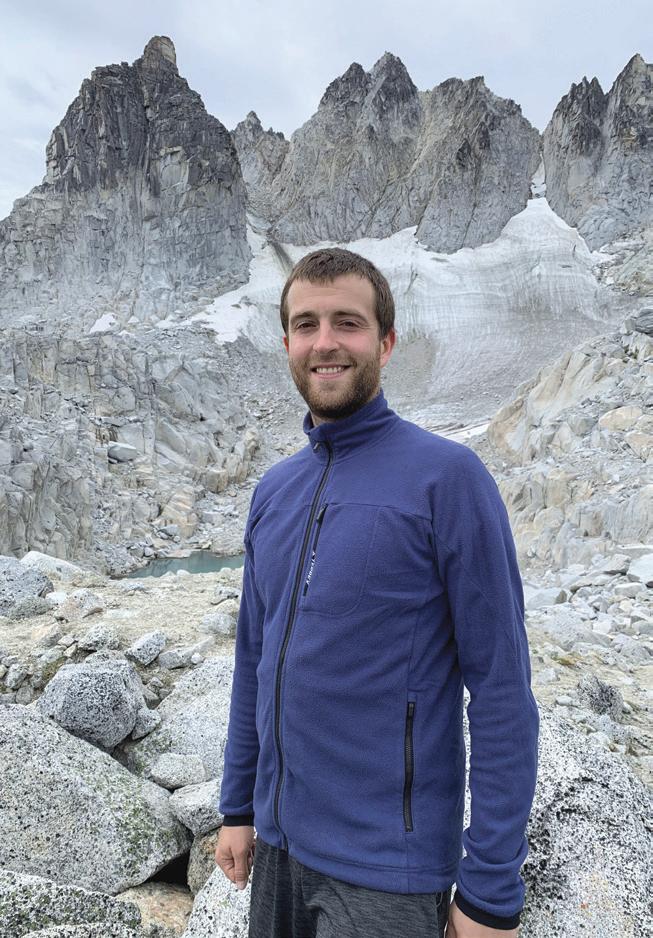
4 minute read
Martin Merz ’09 Physical Scientist, U.S. Environmental Protection Agency
Martin Merz ’09, Physical Scientist, U.S. Environmental Protection Agency
Every month, Martin Merz ’09 gathers with a small group of consultants, engineers, fisheries scientists and other friends in the water field to discuss the health of the region’s rivers, wetlands, and marine areas. This group, which he started a year ago, calls these gatherings “Water Nerd Meet Ups.”
Advertisement
“We support each other in our careers, share about interesting projects that we are working on, and discuss current events,” explains Martin, who works as a Physical Scientist in the Water Division at the U.S. Environmental Protection Agency (EPA), Region 10, in Seattle. “I want to create spaces to talk openly about these issues.”
Martin holds a master’s in Environmental Science and Management with a specialization in Water Resources Management from the Bren School of Environmental Science and Management at UC Santa Barbara. During his graduate studies he was part of the Sustainable Water Markets Fellowship Program.
Martin’s current work at the EPA is largely focused on the quality and temperature of Pacific Northwest rivers and the habitat they provide for salmon, with most of his work focused on the Columbia and Snake Rivers.
“In the summer, many Pacific Northwest rivers, including the Columbia and Snake Rivers, are too warm and can be harmful to migrating salmon,” explains Martin. “When salmon migrate up the Columbia River to their spawning grounds, the temperature of the river and the temperature of any cold-water habitat they can find to rest in plays a substantial role in determining their spawning success. Their gas tank depletes more quickly in warm temperatures.”
Cooling the River
The Columbia River, which has always heated up in the summer, is now trending warmer in the summer months, and will continue to trend in this direction.
“To cope with the warmer temperatures, migrating salmon seek out and rest in cold-water pockets, which are created where colder, often glacially fed, tributaries meet the Columbia River,” explains Martin. “One of my current projects involves working with colleagues to map these ‘cold water refuges,’ determine how they are used by salmon, and identify restoration actions to maintain and support them.”
These restoration actions can involve planting trees along riverbanks to provide shade, reconnecting rivers with their floodplains, and identifying other levers throughout the tributary watersheds that impact the quality of these cold-water refuges.

Martin demonstrates a watershed model (with Kool Aid and dye as 'pollution') at Totem Middle School in Kent, Washington.
Ensuring a Healthy Watershed
Navigating the world of river restoration and management involves an intricate balance of law (Clean Water Act/ Endangered Species Act), science (temperature/climate/ biology); and institutional dynamics and economics (who is funding what and where?).
“The analyses and reports we are working on provide a regional view of restoration priorities, which may help to steer organizations, decision makers, and funders towards restoration projects and actions that provide broader benefits to migrating salmon,” says Martin. “The goal is healthy watersheds that work for fish and people.”
In addition to this work, Martin oversees the Washington water quality permits for tribal and federal fish hatcheries and net pens—meaning he spends a lot of time working closely with the region’s Native American Tribes. These hatcheries are for enhancement purposes, meaning the fish are released to bolster fish populations and, in some cases, to help feed endangered Orca Whales.
Additionally, Martin is engaged in permitting for the Columbia and Snake River Dams. “Permitting involves evaluating water quality standards, evaluating pollution levels in the river and in the effluent of a facility, and developing best management practices and pollution limits that are protective of human health and aquatic life,” explains Martin. “It’s very rewarding to work on these issues in the area where I grew up—working to protect water quality in rivers I swam in as a kid.”
Intersecting Sciences
Developing the responsibility to care for the environment came in part from Martin’s teenage years in The Northwest School Environment Program. “In taking care of your immediate environment you learn to take some responsibility for the broader landscape where you live and on which we all depend,” confirms Martin.
The physical scientist Martin is today can be traced back to biology with Mark Terry, chemistry with Renee Fredrickson, and physics with Cecilia Tung, according to Martin.
“I work on the cusp of all of these: chemistry as I’m writing permits about all kinds of pollutants; physics in how those pollutants mix with water and move around, and biology in what it means for fish and humans to interact with the water.”

Martin, hiking the Enchantments Trail in Leavenworth, Washington, Summer 2019
Motivating Action
Because he works on environmental issues and deals with the impacts of climate change, Martin concedes he is often the bearer of bad news. At the same time, he doesn’t shy away from hard facts.
“My 2019 goal was to stop beating around the bush. These are important issues and we need to talk about them openly without it being seen as ‘negative.’ If you say it’s all going to be okay, where’s the motivation to act and change behavior?”
That said, Martin insists he is positive: “It feels good to get up every day and have the opportunity to engage with these important issues, always trying to learn something new, connect the dots, and search for solutions. It’s exciting and dynamic, and I’m always looking for what’s next.”




